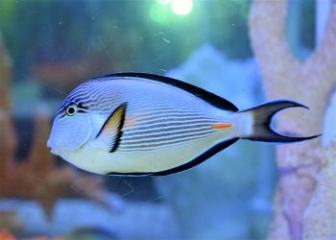Gourami Fish - Learn about their habits, care, and proper breeding
Blog | by
Trichogaster lalius, a small freshwater ornamental fish, originating from South Asia, has eye-catching colors, is easy to raise, easy to breed, and is cheap.
Trichogaster lalius, also known as Indian gourami fish, fire gourami (scientific name is Trichogaster lalius), is one of the most popular small freshwater ornamental fish in aquariums. They have colorful colors, impressive appearance with sparkling stripes along the body, very prominent under the light.
In today's article, let's learn more about the gourami fish to know its origin, characteristics, habits, care methods, and the price of this nice fish on the Vietnamese market !
Information about the Brocade :
| Scientific name | Trichogaster lalius |
| Common name | Indian gourami, fire gourami |
| Class | Actinopterygii - Ray-finned fishes |
| Set | Perciformes - Sea bass |
| Surname | Osphronemidae - Elephant ear fish |
| Spend | Trichogaster - Dwarf gourami |
| Source | Nam A |
| Lifespan | 3 - 5 years |
| Size | 5 - 8 cm |
Where does the gourami fish come from?
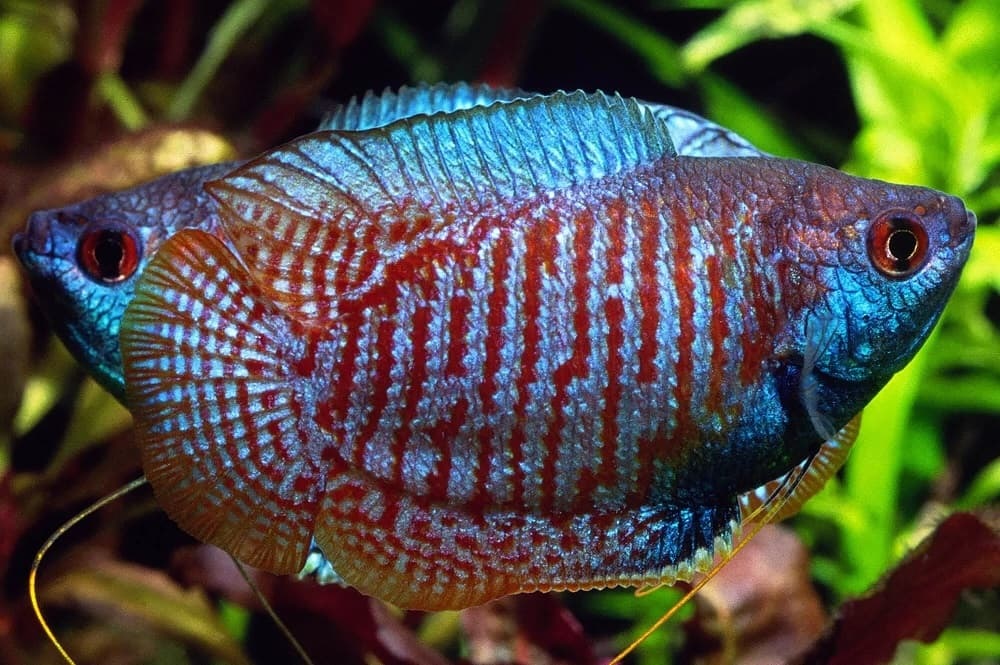
The gourami is a species of ornamental fish with bright, sparkling colors.
The gourami is native to South Asia, mainly India, Bangladesh and Pakistan. They live in ponds, rivers or swamps, where the water is slow-moving and has a lot of aquatic vegetation, and is warm all year round.
The gourami was introduced into the aquarium industry around the 20th century thanks to its beautiful and impressive appearance. And today they are bred in many countries such as Vietnam, Thailand, Indonesia, China and both Europe and North America to create beautiful color variations such as red gourami, green gourami and jade gourami.
Appearance of the Gourami fish and how to distinguish between male and female Gourami fish
Let's learn more about the general appearance of the gourami and how to distinguish male from female fish.
Physical characteristics of the Gourami fish
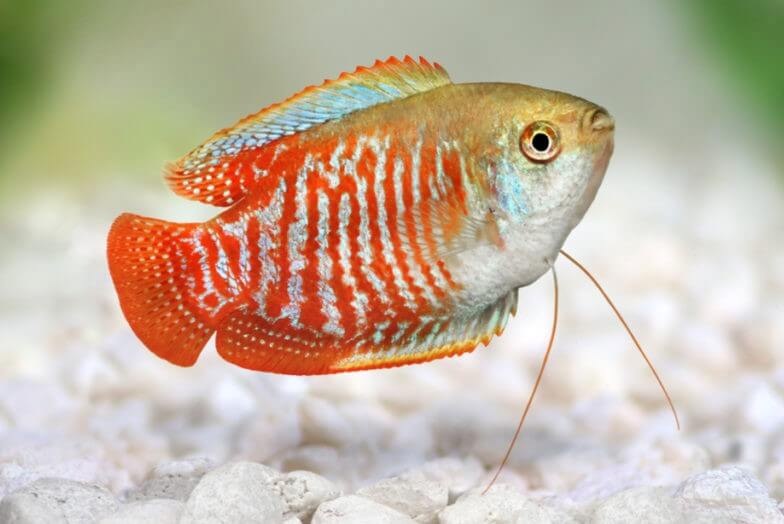
The scorpionfish has two long, thin, thread-like pectoral fins that serve to "probe" the way.
The gourami is known for its colorful, eye-catching appearance, which is very prominent in the ornamental fish village. Let's learn more about the physical characteristics of this fish species.
- Size : Average 5 - 8 cm when mature.
- Shape : Oval body, flattened on both sides, balanced head and body, small mouth slanted upwards.
- Color: Colorful, shimmering metallic, with vertical stripes of metallic blue alternating with orange-red, copper-red, some new color variations such as neon blue, light powder blue, fire red, rainbow colors,...
- Dorsal and anal fins : Extended backwards, pointed.
- Pelvic fin : Thin as a thread, extending backwards, acts as a tactile organ used to sense the surrounding environment.
- Caudal fin : Fan-shaped, moderate.
Distinguishing between male and female gourami fish
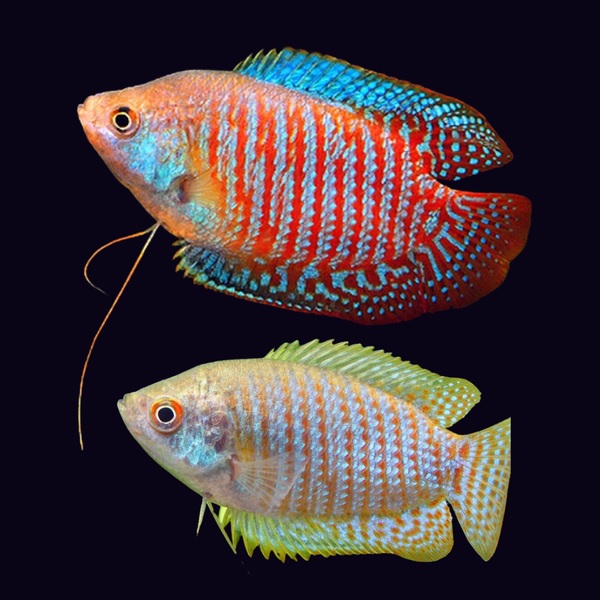
Male and female gourami have different colors and sizes.
Below are some characteristics that help you easily identify male and female gourami fish to make raising and breeding easier.
| Characteristic | Male gourami | Female gourami |
| Color | More vibrant, more stripes, more patterns | Lighter in color, often with a silvery, pale blue background with pale yellow banding |
| Size | Bigger | Smaller |
| Body | Slim, long | Round belly, round fins |
| Dorsal fin | Large, elongated from head to tail, pointed. | Smaller, slightly rounder |
Gourami fish behavior

The gourami is kept with Neon Tetra fish.
The gourami is a small, gentle aquarium fish with many interesting habits. Let's find out now.
gentle, friendly
The gourami is a gentle fish that adapts well to other fish in the community aquarium. It can be kept with many small, gentle fish such as Neon Tetra, Molly , and Mouse Fish , etc.
Curious about everything
Gouramis are curious by nature, they often swim around the tank to explore the space, but will not cause trouble with other fish. They are also sensitive to movements outside the tank, always swimming closer when they see people approaching the tank.
Special respiration through the Labyrinth organ
The Gourami has a labyrinth organ - similar to a lung - that allows it to take in air directly from the water surface. This allows the fish to survive in oxygen-poor environments such as stagnant ponds, swamps, and even tanks without strong aeration.
And certainly in the aquarium you will often see this fish swimming to the surface of the water to breathe, and this is a very normal thing.
Active during the day, likes quiet spaces
The gourami is only active during the day, but at night they often hide near the bottom of the tank or in aquatic plants to rest.
They also do not like tanks with too much light or strong currents, prefer tanks with lots of dense aquatic plants, clear, calm water.
Have special sense organs
Unlike some other aquarium fish, gouramis have long, thin pelvic fins used to "touch" and sense the surrounding environment or other fish, helping the fish to better navigate.
Reproduction in bubble nests
The Sặc Gắm is an egg-laying fish. They have a special form of bubble nest reproduction as follows:
- Male fish in breeding season will create bubble nests with air bubbles.
- The male fish lures the female fish to mate under the bubble nest, then the female fish lays eggs, it will collect the eggs with its mouth and put them into the bubble nest.
- The male fish guards the bubble nest to protect the eggs.
- Eggs hatch after 1-2 days, after 4-5 days the fry can swim freely.
Detailed instructions for raising Gourami fish
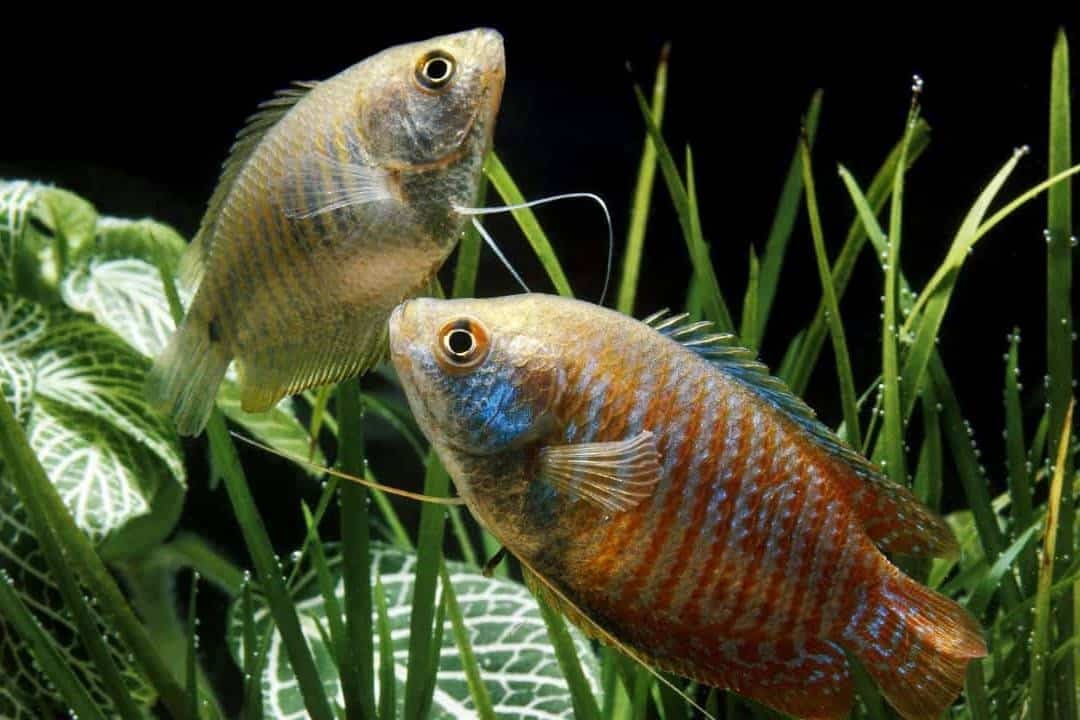
Male and female gourami are raised together for breeding.
Below is the most detailed and practical guide to raising Gourami fish for those who are new to raising ornamental fish. We invite you to learn more.
Design the tank and suitable habitat
Gourami fish like clean, quiet water with lots of aquatic plants, so when designing a fish tank, you need to keep in mind the following:
| Element | Appropriate standards |
| Tank volume | Minimum 50 - 60 liters for 1 pair of fish |
| Filtration system | Choose a medium filter that does not create a strong flow |
| Led Light | Choose a lamp with soft, warm light, and light for 8-10 hours a day. |
| Decorate the calf |
Look for many soft-bodied aquatic plants such as water fern, water lily, duckweed,..., Decorate with rocks, cast iron, driftwood for fish to have shelter at night. Line the bottom with fine gravel or white sand. Add a few dried Indian almond leaves to both naturally fight bacteria and create a natural environment for the fish. |
| Water temperature | 24 - 28 degrees C |
| pH | 7 - 8 |
| Water hardness | 4 - 10 dGH |
What do gourami eat?
Gourami can eat some of the following:
- Fresh food : Bloodworms, water mites, small shrimp, red worms.
- Dry bran and pellets : Bran for small ornamental fish, choose the floating type.
- Vegetables, plants : Moss, soft seaweed or soft boiled green vegetables, finely chopped.
Note, you should only feed the fish twice a day, each time giving enough food for the fish to eat in 2-3 minutes to avoid waste and water pollution.
Which fish should be raised with the Gourami?
The gourami has a gentle temperament so it can be raised with many other types of fish such as Guppy, Molley, Neon, triangle... It is recommended to raise 1 male with 2 females, avoid raising 2 males in the same small tank to avoid the fish chasing and fighting each other.
Do not raise the goc gam with aggressive ornamental fish such as Hong Ket , La Han , Tiger fish, Duck fish,...
Clean the tank and change the water regularly.
To help the gourami grow best, you should pay attention to cleaning and changing the water regularly.
- Change 20 - 30% of the water in the tank every 1 - 2 times/week.
- If using tap water to raise fish, it needs to be left to settle overnight or dechlorinated.
- Regularly vacuum the bottom, clean the bottom of the tank and the glass surface.
Common diseases in Gourami fish and how to treat them
Right below, we have compiled some common diseases in gourami, please learn more to know how to treat them effectively.
| Disease name | Reason | Symptom | Treatment |
| Mushroom |
Dirty, polluted water Fish with open wounds create conditions for fungus to grow. |
Fish have white cotton-like patches on gills, mouth, body, fins, and scales. Fish are lethargic, do not swim much, or lie still in one place. |
Isolate the disease. Use fish antifungal medication such as methylene blue at the recommended dosage. Increase temperature to 28 - 30 degrees Celsius for 1 week to disinfect and increase immune system. Change 50% of the water in the tank, use diluted salt at a ratio of 2g/liter. |
| The brocade fish has ruffled fins. |
Internal infections due to prolonged environmental pollution. Spoiled food, not fresh |
The fish's belly was abnormally swollen, its scales were rough and raised like pine cones. Fish stop eating, lethargic |
Isolate sick fish. Fast the fish for 1 - 2 days, then feed them fresh garlic mixed with fresh food. Change the tank water, aerate strongly. |
| The fins of the brocade fish are rotten. |
Aeromonas or Pseudomonas infection. Fish bitten by ferocious fish, dirty water, pollution |
Fins are torn, folded, fish tails are gradually frayed, rotten and fall off. Fin edges are red or milky white |
Isolate sick fish. Use fin rot medicine such as Tetrafin, diluted salt + methylene blue. Clean the tank, change the water, and vacuum. |
Price list of Sắc Gầm fish
Right below, we have compiled the prices of the Sắc Gầm fish from reputable aquarium stores in Vietnam. If you want to buy, please refer to it.
Note : The price list will change depending on the time, so it is best to contact the stores directly to update the latest and most accurate prices.
| Shop | Reference price (VND/piece) | Note |
| SG AQUA | 12.000 - 15.000 | Normal fish, standard size |
| Aquarium accessories | 10.000 - 15.000 | General type |
| Purple aquatic plant | 20.000 - 30.000 | Imported type, beautiful color |
| Lazada | 30.000 - 50.000 | There is a refund policy |
| Good Market | 60.000 - 80.000 | Combo of 5, personal transaction |
Questions and answers about the Gourami fish
Do gouramis lay eggs or give birth?
The goby is an egg-laying fish, the eggs are incubated in bubble nests created by the male fish.
Do gourami eat shrimp?
Yes, gourami fish love to eat shrimp, shrimp not only provides high nutritional content but also helps the fish to have more colorful colors.
Is it normal for gourami to spray water?
This is completely normal, sometimes the brocade will spray water which is very funny.
Beautiful gourami fish pictures
To help you fully appreciate the colorful beauty of the gourami, we have compiled many beautiful images of them in different color variations, let's admire them right away.

A red gourami with a brilliant appearance.

Blue gourami with soft color.

A beautiful turquoise colored gourami.

The brocade fish has a graceful, soft swimming style.
Thus, through the article on nicefish.net, we have shared all the information about the gourami from its origin, habits to how to care for it. Hopefully, you will successfully raise this colorful and impressive ornamental fish, limit diseases, reproduce, and develop best.
If you want to explore more beautiful aquarium fish species to find good "candidates" for your aquarium, please refer to the articles in the Blog section !
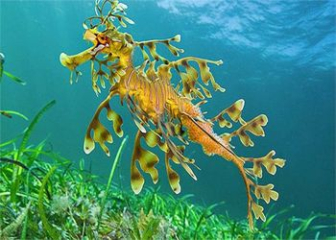
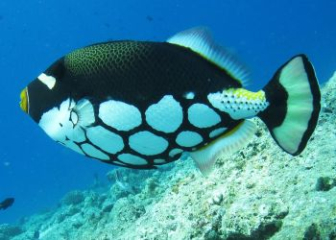
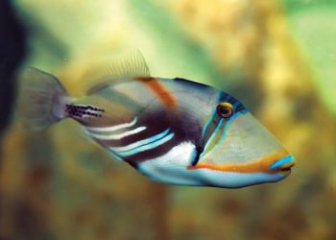
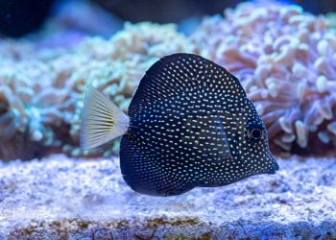
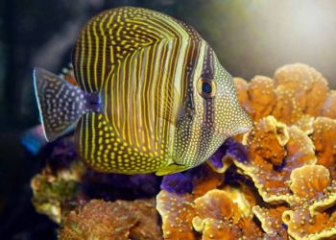
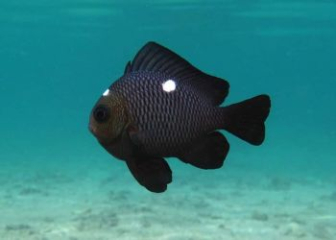







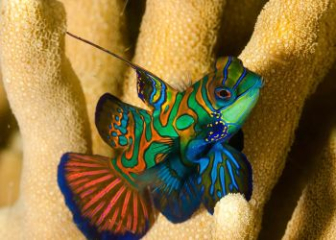

_350x250.jpg)


